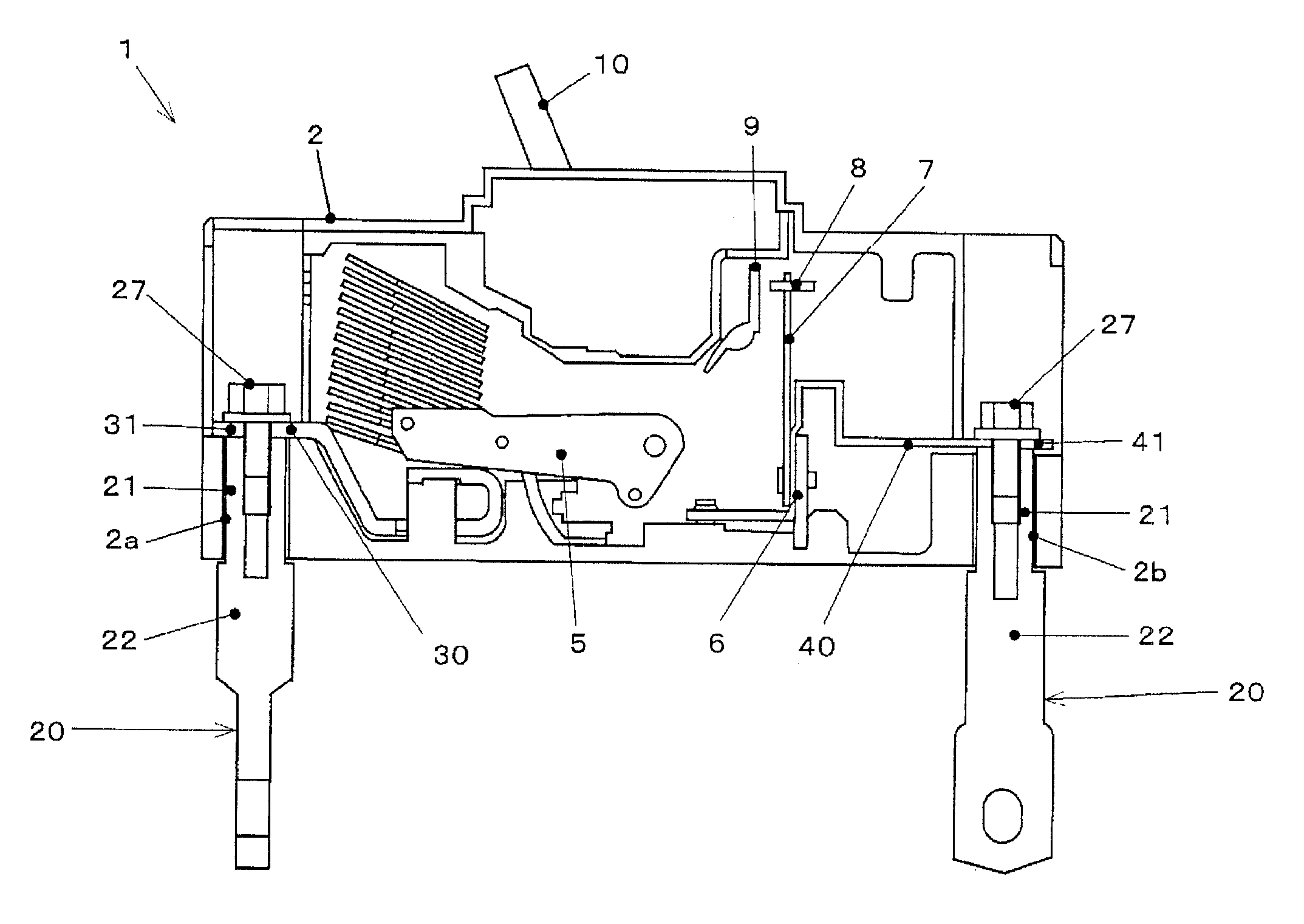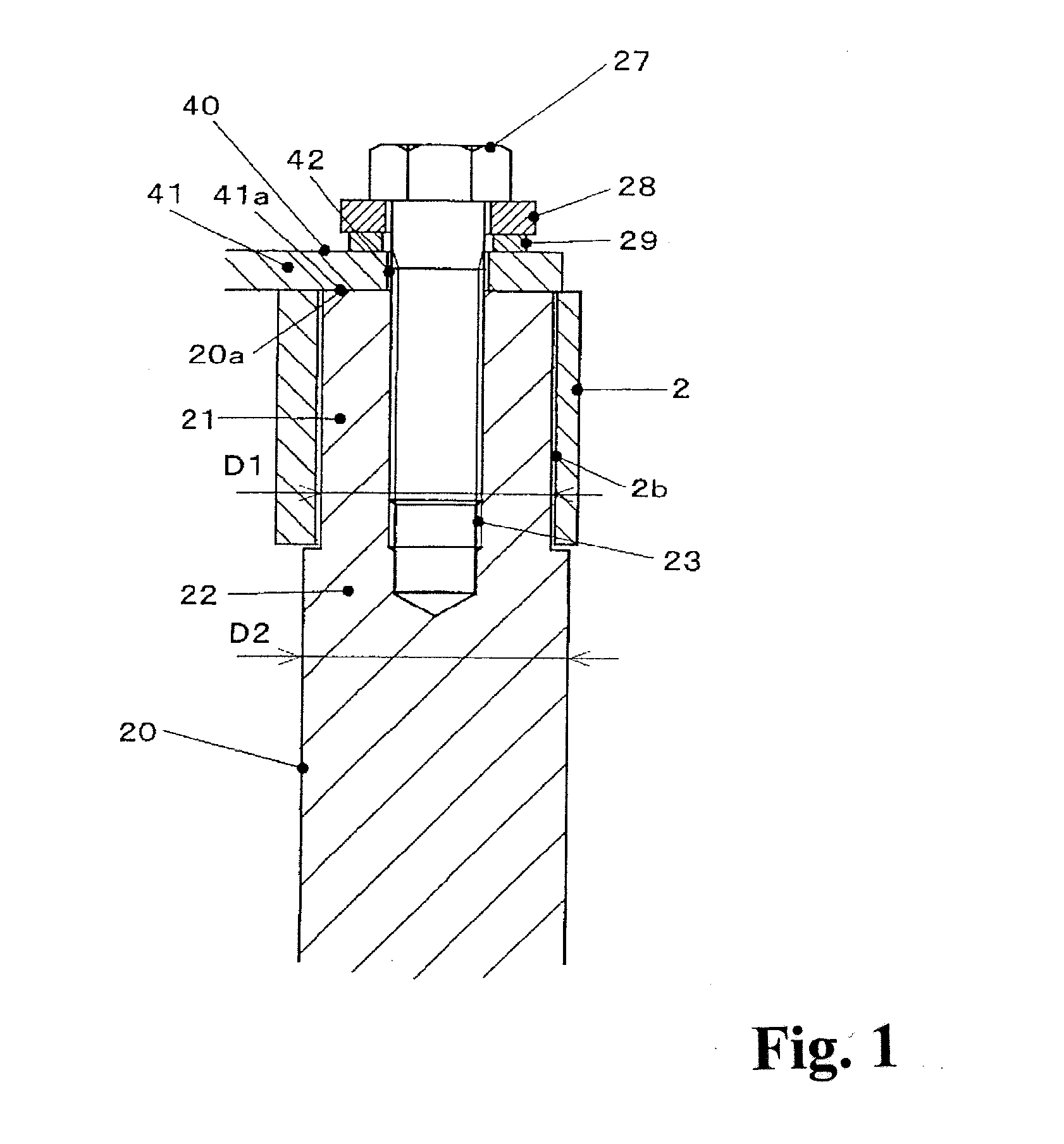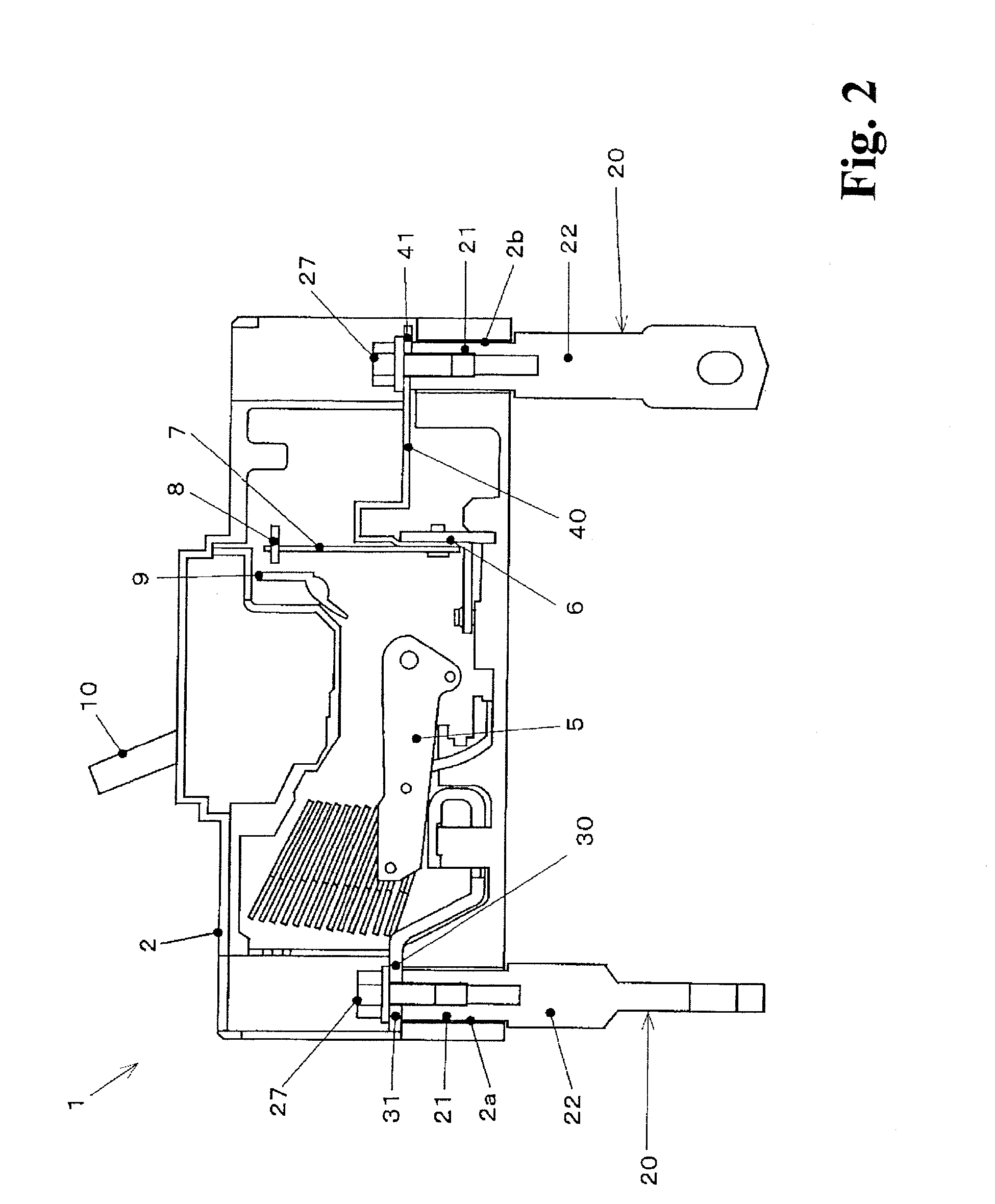Circuit breaker
a circuit breaker and circuit technology, applied in the field of circuit breakers, can solve problems such as the limitation of the adjustment of bimetal, and achieve the effects of reducing material cost, reducing component structure changes, and increasing thermal conductivity of the entire stud
- Summary
- Abstract
- Description
- Claims
- Application Information
AI Technical Summary
Benefits of technology
Problems solved by technology
Method used
Image
Examples
first embodiment
[0027]As shown in FIG. 2 or FIG. 3, a circuit breaker 1 includes a case 2 with a rectangular parallelepiped shape. For example, a breaking mechanism portion that breaks a circuit when a current with a predetermined value or more flows, and terminals 30 and 40 connected to the power supply side or the load side of the breaking mechanism portion are provided in the case 2. The breaking mechanism portion includes, for example, a movable contact 5, a heater 6, and a bimetal 7. When a voltage is applied, a current sequentially flows through the power-supply-side terminal 30, the movable contact 5, a connection conductor (not shown), the heater 6, and the load-side terminal 40 having one end connected to the heater 6. Studs 20 are attached to the power-supply-side terminal 30 and the load-side terminal 40, which will be described in detail below.
[0028]The case 2 is made of a synthetic resin with a good insulating property. A handle 10 for manual operation is provided on a front surface 2d...
second embodiment
[0040]Next, a circuit breaker according to a second embodiment of the invention will be described with reference to FIG. 4.
[0041]A stud 20A of the circuit breaker according to this embodiment includes a base portion 21 that is inserted into an insertion hole 2b of a case 2 and a protruding portion 22 protruding from the case 2. The diameter of the protruding portion 22 is more than that of the base portion 21. The stud 20A is formed by bonding two members, that is, a first member 50 that includes the base portion 21 and a part of the protruding portion 22 close to the base portion 21 and a second member 60 that includes the other part of the protruding portion 22. A screw hole 51 is provided in the end surface of the first member 50 so as to extend on the axis. The first member 50 is made of a material (for example, copper) with a high thermal conductivity and the second member 60 is made of a material (for example, aluminum) with a low thermal conductivity. The first member 50 and ...
third embodiment
[0045]Next, a circuit breaker according to a third embodiment of the invention will be described with reference to FIG. 5.
[0046]A stud 20B of the circuit breaker according to this embodiment includes a base portion 21 inserted into an insertion hole 2b of a case 2 and a protruding portion 22 protruding from the case 2. The diameter of the protruding portion 22 is more than that of the base portion 21. Similarly to the stud 20A according to the second embodiment, the stud 20B includes a first member 50 that includes the base portion 21 and a part of the protruding portion 22 close to the base portion 21 and a second member 60 that includes the other part of the protruding portion 22. In this embodiment, the stud 20B is formed by fastening and fixing two members 50 and 60. The first member 50 is made of a material (for example, copper) with a high thermal conductivity, and a through hole (clearance hole) 51 into which a screw 27 is inserted is formed on the axis in the first member 50...
PUM
 Login to View More
Login to View More Abstract
Description
Claims
Application Information
 Login to View More
Login to View More - R&D
- Intellectual Property
- Life Sciences
- Materials
- Tech Scout
- Unparalleled Data Quality
- Higher Quality Content
- 60% Fewer Hallucinations
Browse by: Latest US Patents, China's latest patents, Technical Efficacy Thesaurus, Application Domain, Technology Topic, Popular Technical Reports.
© 2025 PatSnap. All rights reserved.Legal|Privacy policy|Modern Slavery Act Transparency Statement|Sitemap|About US| Contact US: help@patsnap.com



